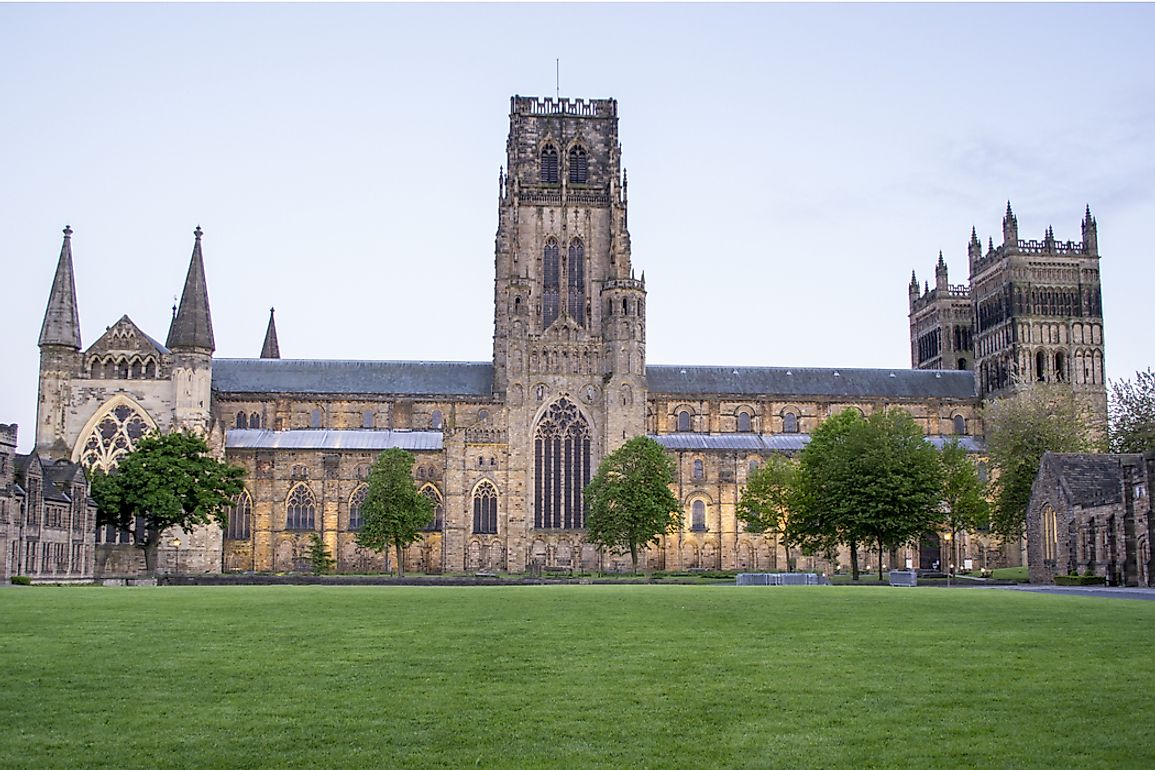Durham Cathedral - Notable Cathedrals

The Durham Cathedral is located in Durham City, England, high above River Wear. It is the home of Shrine of St Cuthbert and the seat of the Bishop of Durham, the fourth most significant seat in the Church of England. The cathedral was founded in 1093 and is considered the best example of Norman architecture. It is listed as a World Heritage Site alongside Durham Castle. The present Durham Cathedral building replaced the “White Church” which was constructed as part of St Cuthbert of Lindisfarne’s shrine.
History
The Durham See originated from Lindisfarne Diocese which was initiated by St Aidan in 635. Following the frequent Viking raids, some monks ran away from Lindisfarne, carrying with them the remains of St Cuthbert. A legend has it that when the monks reached a peninsula that was formed by the River Wear, the coffin carrying the remains of St Cuthbert refused to move. This was taken as an indication that a new shrine was to be built there. Thus, a simple structure was erected there to keep the relic of Cuthbert. It was later moved to a much steadier and portable building called the White Church.
The White Church was replaced after just three years with a stone church which was also referred to as the White Church. Durham quickly turned to a popular pilgrimage site. One of the earliest pilgrims, King Canute, granted the community of Durham much land other privileges. The large sums money paid by pilgrims and the privileges granted by the king ensured that the town of Durham grew around the cathedral.
The present Durham Cathedral was proposed and built during the reign of William of St Carilef, the first prince-bishop, in 1080. Since then, several major reconstructions have been done to the cathedral but the building still retains the Norman plan. The construction work started in 1093 at the eastern side of the choir, which was completed in 1096. The major construction work on the cathedral was completed in 1133.
Unique Features
The Durham Cathedral is notable for its ribbed vault on the nave roof. In fact, it is the only surviving building with a vaulted roof on such a large scale. The cathedral boasts of a Romanesque style and Norman architecture. The pointed transverse arches are supported by relatively slender composite piers alternating with massive drums. The floor and walls of the northern cloister are engraved with the meridian line. The cathedral has few small windows, leaving the interior dominated by damp gloom which mainly characterizes a castle. However, some parts of the building have more windows than walls. The cathedral has some of the most interesting ornate woodworks such as the font cover and the castle’s clock. Several small chapels are also located around the cathedral including Galilee Chapel and the Chapel of the Nine Altars.
Conservation
Both the Durham Cathedral and the Durham Castle are World Heritage Sites. They are partly protected by the government of the UK. The cathedral also enjoys the ecclesiastical protection with the Durham City Council also taking part in the protection and management of both the castle and the cathedral. The main focus is on maintaining its architectural fabric to ensure that it does not lose its value.











